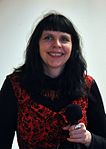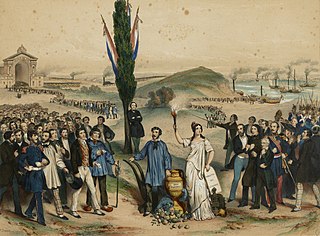
The Left-Green Movement is a eco-socialist political party in Iceland. It is the second largest party in the Althingi, with 11 members of 63 in total, and is currently the leading party in a three-party coalition government formed after the 2017 elections. The party chair is Katrín Jakobsdóttir, MP and the 28th Prime Minister of Iceland since 30 November 2017. The vice chair is Edward H. Hujibens. The secretary-general of the party is Björg Eva Erlendsdóttir. The Left-Green Movement is a member of the Nordic Green Left Alliance.

The Liberal Party was a liberal political party in Iceland. Its main issue was fisheries policy and it drew its main support from coastal villages. It has no seats in the Althing, having lost its four seats at the 2009 election.

Iceland is heavily integrated into the European Union via the European Economic Area and the Schengen Agreement, but it is not a member state. Iceland did apply for membership in 2009 but the application was controversial and was frozen by the Icelandic government.

Parliamentary elections were held in Iceland on 12 May 2007. The Independence Party remained the largest party in the Althing, winning 25 of the 63 seats.
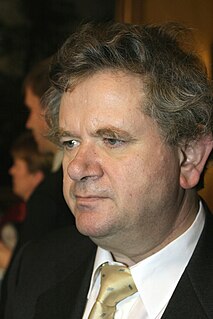
Parliamentary elections were held in Iceland on 10 May 2003. The Independence Party remained the largest party in the Althing, winning 22 of the 63 seats.
Sturla Jónsson, formerly known as the Move Forward Party, is a newly formed Icelandic political party. The party was known as the Move Forward Party from its founding on 17 December 2008 to 5 April 2013 when it was renamed after its founder.

A parliamentary election was held in Iceland on 25 April 2009 following strong pressure from the public as a result of the Icelandic financial crisis. The Social Democratic Alliance and the Left-Green Movement, which formed the outgoing coalition government under Prime Minister Jóhanna Sigurðardóttir, both made gains and formed an overall majority of seats in the Althing. The Progressive Party also made gains, and the new Citizens' Movement, formed after the January 2009 protests, gained four seats. The big loser was the Independence Party, which had been in power for 18 years until January 2009: it lost a third of its support and nine seats in the Althing.

Katrín Jakobsdóttir is an Icelandic politician serving as the 28th and current Prime Minister of Iceland since 2017. She is the member of the Althing for the Reykjavík North constituency since 2007. She became deputy chairperson of the Left-Green Movement in 2003 and has been their chairperson since 2013. Katrín was Iceland's Minister of Education, Science and Culture and of Nordic Co-operation from 2 February 2009 to 23 May 2013. She is Iceland's second female prime minister after Jóhanna Sigurðardóttir.
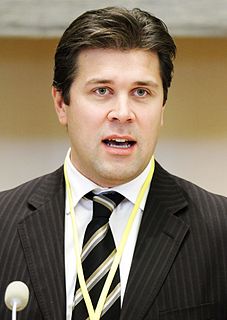
Bjarni Benediktsson, known colloquially as Bjarni Ben, is an Icelandic politician, who served as Prime Minister from January 2017 to November 2017. He has been the leader of the Icelandic Independence Party since 2009, and previously served as Minister of Finance and Economic Affairs from 2013 to 2017.
Bjarni Harðarson is a bookseller, novelist, and former MP from the Icelandic Progressive Party.
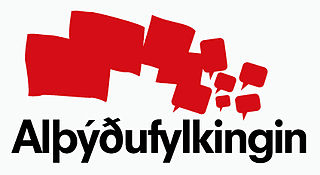
People's Front of Iceland is an anti-capitalist political party in Iceland founded on 18 February 2013, seeking to "... free the people from the yoke of market capitalism". It is "unconditionally opposed" to Iceland's accession to both the European Union and NATO, believing them to be "imperialist" organisations. The party founder, Þorvaldur Þorvaldsson, is a self-declared communist.

Rainbow is a Eurosceptic and socialist political party in Iceland, founded in March 2013 by former MP Bjarni Harðarson, who had been elected for the Progressive Party, and current MPs Jón Bjarnason and Atli Gíslason, both dissidents from the Left-Green Movement (VG). The party intends to exist only to contest the 2013 Icelandic parliamentary election.

The Humanist Party is a political party in Iceland founded on 25 June 1984. It has run candidates in the 1987 and 1999 parliamentary elections, but has never achieved representation. It is related to the International Humanist Party.

Parliamentary elections were held in Iceland on 29 October 2016. They were due to be held on or before 27 April 2017, but following the 2016 Icelandic anti-government protests, the ruling coalition announced that early elections would be held "in autumn".

Parliamentary elections were held in Iceland on 28 October 2017. On 15 September 2017, the three-party coalition government collapsed after the departure of Bright Future over a scandal involving Prime Minister Bjarni Benediktsson's father writing a letter recommending a convicted paedophile have his "honour restored". Bjarni subsequently called for a snap election, which was officially scheduled for 28 October 2017 following the dissolution of the Althing.

The next Icelandic parliamentary election to elect members of the Althing will be held no later than 23 October 2021.









